What is SEO & How To Win Clients Strategically with SEO Optimization Tips?
You have the perfect business idea, a professional website, and already have an attractive logo designed. You might think that’s enough to let people know about your services, but in reality, it is not.
The fact is you need search engine optimization (SEO) to help drive search engine traffic, get more visitors to your website and increase conversions. Let’s face it, we all want to build a more prominent clientele, get search traffic and quality leads, and earn more money from our business.
Search Engine Optimization is the process of improving ranking performance to increase the number of visitors to a website and the number of page views, i.e., creating an improved user experience by following search engine guidelines.
The phrase “search engine optimization” originally originated in 1997, as per Danny Sullivan, an industry observer. Furthermore, Search Engine Optimization is a constantly evolving marketing discipline, one that can make or break your website.
Here is the complete guide to SEO strategy and optimization with the topics provided in the section below. You can understand many aspects of what SEO Optimization and SEO strategy are after reading this post. You can learn about link building, SEO tools, relevant keywords, and why they are essential. You can also learn about how to get new clients by improving your website’s SEO and how to optimize your content to drive more traffic to your website.

What is SEO?
The science and practice of enabling websites and web pages to perform better in major search engines such as Google, Yahoo, and others are known as search engine optimization (SEO). Creating high-quality content, optimizing material around relevant keywords, search queries, structured data, and establishing internal and external links are all common SEO chores.
The most frequent way for consumers to obtain information on the web is through search results. In simple words, SEO is concerned with increasing a site’s rating in the organic (non-paid) area of search results. A higher search engine results page rating may result in more significant traffic to a website.

Paid advertisements show at the top of search engines results from sites such as Google and Bing. “Organic search results,” or ordinary results, as they’re termed by search marketers, come next. To distinguish this from the traffic that comes from sponsored search, SEO traffic is typically referred to as “organic search traffic.” Premium advertising is sometimes known as search engine advertising or PPC advertising.
What are the advantages of implementing SEO?
Searching is a popular technique for people to navigate the internet. It is impossible to overestimate the value of search engine optimization in internet marketing. Your findings are organized and arranged in a logical sequence. The higher a website ranks on the list, the more visitors it will receive.
For example, the top search results will receive 40-60% of the total traffic for that keyword. The 2nd and 3rd results, on the other hand, will receive far less attention. Only a small fraction of users look past the first page of results. As an outcome, even small changes in search engine rankings might result in more visits and, potentially, business for a website.
How do Search Engines function?
To choose which sites to display for each query, the leading search engine, such as Google, uses an algorithmic formula or procedural rules. To decide the rankings of their SERPs (Search Engine Results Page), these algorithms have transformed to be incredibly complicated.

It considers dozens, if not hundreds, of different rating characteristics. However, search engines use three essential characteristics to determine the quality of a website and where it is being ranked.
Significance of Links in SEO
The value of a strong connection profile will differ depending on the expert. The most crucial ranking criteria Google makes for you, in my opinion, are links. Links from several other websites are significant in determining a website’s grade for Search engines such as Google. Since website owners are cautious about associating with low-quality websites, a link from a certain site could be interpreted as a vote of trustworthiness.
Sites that receive multiple links from other sites earn credibility in search engine results. Mainly if the sites to which they are connected are similarly credible. If you use the wrong strategies, you’re asking for trouble from the start. It may take a little longer if you adopt the long-term plan and create links the proper way, but you’ll thank yourself afterward.

What are the Most Crucial Link-Building Elements?
The following are the most crucial things to think about link building for your website:
A) The quality of the links
While the quantity of connections isn’t everything, the quality of the links is. The number of links you have isn’t as significant as the quality of those links. Building excellent backlinks require reaching out to the right people and delivering value in exchange for a solid connection. Because there are various tactics for developing quality links, Google rewards all who execute them flawlessly.
The majority of people just consider the overall number of connections, which is not the best strategy for several reasons:
- If the great majority of links are of low-quality or “spammy,” search engine algorithms may overlook them.
- Backlinks from newly launched websites are more valued than links from established ones.
- Backlinks from other sites are more valuable than those from your own site (from one page to another).
Google rewards individuals that give value in return for a link, which is the purpose of link building. You’d like to contribute a guest article to a website where people are interested in your area of expertise. The site for which you write a guest post should have its visitors. When the site gets more traffic, more link juice will flow in your direction since others will notice what you’re giving.
B) Anchor Text
Anchor text is the stuff that appears beneath the link. The idea is for the text to appear in the piece as organically as possible. Because each sort of anchor text has its position in the SEO world, you should have a range of them. You wouldn’t want a piece of text simply saying “click here” and taking it to your website.
C) Number of hyperlinks
Finally, the overall quantity of links you have counted must generate high-quality backlinks on a large scale over time. You need something more than total links. Sites with the highest-quality links will have the upper hand. However, it is also dependent on the pages to which you are receiving links. Connections to your homepage are beneficial. However, most natural links will not be to your homepage unless they expressly refer to your brand name.

People frequently connect to pages or articles on your website. Make sure the proper sources are linked to the right web pages if feasible. We definitely would not like our privacy policy page to receive the most organic views and online traffic than the products and services page. Visitors cannot provide you with personal information, subscribe, or make purchases on the privacy policy page. There isn’t anything for sale on that page!
The second is failing to analyze how and where such linkages originate. The heatmap section allows users to see which site components are assisting conversions and which are preventing visitors from converting. If you’re looking for links to this webpage, you might want to start with landing pages or conversion-related sites.
Although you may need to alter additional feature pages, such as recordings, a design-related relationship wouldn’t make much sense here. If the website or article was about usability or interface design, it would be a good match. Remember, the quality of the connections you receive is important. Similarly, is the location to which they link.
Three Ways to Boost Your Link Profile
Let us now give you some concrete strategies. You can use it to boost your link profile and guarantee that you’re receiving the maximum link juice out of your efforts.
A) Try not to take any shortcuts.
When it comes to hyperlink creation, there are no alternative routes. Take sufficient time and do the job properly. This entails striking up discussions with other bloggers and marketers, marketing yourself, and explaining how you can add value to their website. Look for opportunities to fix broken links. Look for relevant websites to promote through email and social media.
B) Remove potentially harmful links.
Google includes a tool called the disavow tool that allows you to delete links that may be damaging your ranking. You should use this function with caution. This is because disavowing a large number of connections might really hurt your site.
C) Don’t forget about internal linking.

Internal linking is a crucial component of the jigsaw. We shouldn’t focus just on outward connections. External connections are crucial. However, developing a network of related subjects inside the same niche aids Google’s crawling of your site. Search intent and the total conciseness of a piece of material are also factors that Google considers. Google will value you if you can address everyone’s concerns in one location with a group of articles that cover a topic from beginning to end.
Page structure and Its Importance in SEO
This is the final key component of SEO. Because webpages are generated in HTML, the architecture of the HTML code may influence how a search engine ranks a page.
Site owners can boost their SEO by including important keywords in the URLs page titles, and Digital marketers can improve their SEO by including relevant keywords in URLs, page names, and headings and also confirming that their site is discoverable. To increase performance, the search engine optimization technique entails modifying each of these critical components of search engine marketing.
Link building
Among the most significant SEO factors is obtaining high-quality links. This is due to the fact that links from other websites (referred to as backlinks in SEO terms) are one of the basic ranking criteria used by Google as well as other major search engines.
This could include advocating good content, trying to contact various websites and creating relationships with webmasters, sending websites to relevant internet directories, etc., in order to attract backlinks.
HTML
Your website’s HTML code is an important part of SEO marketing. If you don’t employ appropriate tags, headings, and descriptions, Google may have difficulty recognizing what your text is all about, and this must rank higher over competing brands.

People are worried when they find that HTML is a part of SEO; however, this is incorrect. You shouldn’t have to write code, and updating tags and descriptions is a straightforward process. Modifying the HTML for SEO purposes is usually as easy as copy-pasting.
HTML Components
Let’s take a closer look at some of the factors you should keep in mind when working with HTML.
A) Title Tags
HTML headers are defined by the h1> to h6> tags. The most essential heading is designated by the h1> tag. Many individuals are confused about the difference between the title tag and the H1 tag. These are two independent headings that should really be treated as such. Whenever your site is browsed on Google, the phrase that appears in the tab at the top of your display is called the title tag.
B) Meta Description
The meta description tells the search engine what the content is with regards to. With less than 160 characters, this portion must be keyword-optimized. You would like it to appear well on smartphones as well as desktops and laptops. It would appear underneath the Meta Title in Google search results, giving a brief description of the webpage.
C) Schema
Schema is the result of collaboration between a number of search engines. It’s simply a set of specialized HTML elements that boost the visibility of your content in the SERPs. After you’ve completed adding your schema, check your webpage to confirm everything is functioning properly.
D) Subheadings
A good illustration of a subheading is your H1. This is the title of your article that sits at the top. Although it may appear to be nothing more than a collection of words, it is critical as it’s your H1. This is your website’s main header.
This header includes information about the article’s content to Google. It’s also your opportunity to capture readers’ curiosity as soon as they arrive on the page. You should probably include major keywords in your H1. H1 can also be used to encourage visitors to the webpage. It should not be transactional or intrusive. You may wish to convince visitors to keep reading down the page with your H1.
E) Alt Text
The alt text in your article describes the image. It’s on every piece of paper, yet just a few individuals use it. The objective of alt text is to let search engines describe a picture to visually impaired people in an audible manner. When generating alt text, please remember that it should accurately describe the image, and yet it can also be used to insert keywords.
F) URL Slug

The URL slug is the portion in the URL that tells Google whatever the content information is about. It’s also a great idea to include your most important keyword in this section.
Techniques for Search Engine Optimization
Learning how search engines function is just the beginning of enhancing a website’s search results. To improve a website’s rating, a variety of SEO methods must be carried out.
What exactly is keyword research, and how do I use it?
The most common place to start with SEO is to look at what keywords and phrases a site currently rank for, what keywords competitors compete for, and what new phrases potential buyers are searching for. Understanding the search terms that users use in Google or other search engines can help you determine what existing content to improve and what fresh content to create.
Importance of Content in SEO
In addition to hyperlinks, search engines assess the material of a webpage to determine whether or not it is appropriate to a certain search query. Content creation that is targeted at the keywords that search engine customers are searching for is an important component of SEO.
Content marketing

Content marketing can commence once relevant keywords have been identified. This can consist of both upgrading existing stuff and creating entirely new ones. Search engine algorithms place a premium on high-quality information. As a result, it’s critical to do some research and come up with a compelling piece of content. It will deliver an excellent user experience and may rank higher in search results.
Content Components
There are numerous aspects that contribute to the creation of high-quality content; and here are some of my favorites:
a) Quality
It used to be standard practice to publish a piece of content that contained relevant keywords. If you published high-quality content that solved someone’s problem, you stood out, making it easy to rank.
Today’s content is far superior, and many online businesses keep blogs in order to create value for their sites and enhance their Google results. It’s not easy to come up with excellent material. The best part is that you might not need to start from scratch. Feel free to expand on other people’s work. Make sure to give your piece of content more depth and worth.
The basic line is that your content must address a problem or provide a remedy to whatever led the reader to your website. If that doesn’t, they’ll soon abandon your website, alerting Google that your content isn’t solving anybody’s problem.
b) Intent
Google places a high value on purpose. The system tries to figure out what a user is looking for when they type anything into the search engine.
- Is there something more you think they’d like to know?
- Do they intend to make a purchase?
- Is there any window shopping going on?

As a content creator, you should be conscious of it as well. You can’t even include the term “bass fishing” as the major keyword in a piece about the “best ice fishing rods.” It doesn’t make sense since many people don’t fish for bass in the cold with ice fishing poles. If you’re not answering the question correctly, Google will notice it.
c) Freshness
HubSpot has created a baseline that shows how consistent blogging impacts Google rankings. However, adding new content isn’t the only way to notify Google that your website has been updated. You can do a handful with the content you’ve previously published to bring it up to date.
You may show Google that your piece of content is still deserving of being on the first page by editing it for reliability, correcting any broken links, and replacing old information with new, more relevant information.
On-Page & Off-Page SEO
When it comes to complete SEO, there are two approaches to consider: on-page as well as off-page SEO. On-page SEO aims to boost your rankings by providing the finest content possible. This includes, among other things, incorporating keywords into your sites and content on a regular basis, producing good content on a consistent basis, and ensuring that your meta titles and descriptions have proper keywords and are well-written.
On-page optimization
Adding keywords to the URL, updating the title tag to add important search terms, and summarizing images with the alt tag are all examples of on-page SEO methods. Updating the meta tags on the page can also assist. Although these factors have no direct impact on search engine results, they can increase SERP click-through rates.
Off-page optimization
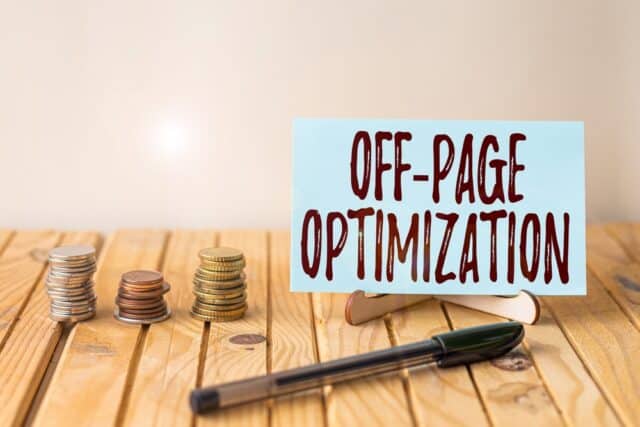
Off-page SEO indicates optimization that takes place outside of your official website, such as the acquisition of backlinks. This equation includes both relationship building and giving details that people require. This is crucial for SEO success because it requires a lot of time and effort.
Elements of Personal SEO Factors
Personal aspects are the next type of off-page SEO worth considering. I’m referring to demographics and geographic areas. These characteristics have an inherent influence on how someone responds to your content. On the other hand, your SEO efforts significantly vary in different parts of the world.
While the bulk of them are beyond your control, there are several things you can do to boost your odds of reaching a specific demographic. A single solution won’t work for all SEO criteria.
Country
All searchers get results that are relevant to the region they are now in. The hours of operation of suggested retailers and restaurants are displayed in accordance with your time zone. Words are interpreted differently by search engines. If you look for a “comforter” in the United States, you’ll find blankets for your bed. However, in the United Kingdom, you’ll get pacifiers since that’s what the name implies.
Including specific nations as keywords are, of course, one method to notify Google that you want to target them. However, first, consider whether becoming international is worthwhile. Various countries have different levels of competitiveness. Remember how keyword selection is heavily influenced by where the competitor is now ranked?
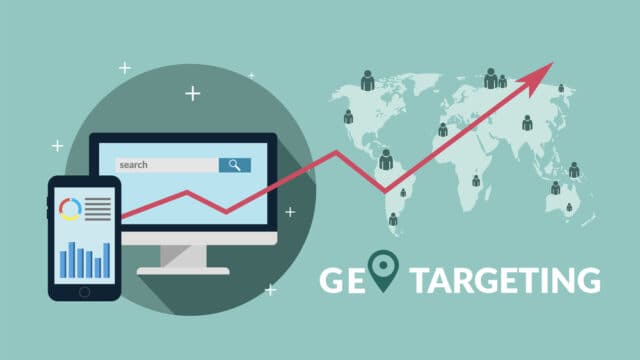
Google India, on the other hand, will provide different results than Google Australia. The level of difficulty may differ based on the area. A multilingual website not only allows you to reach out to more people in their local language, but it may also make it simpler for you to rank in other locations.
One of the simplest’ fast wins’ I’ve seen is creating bilingual material. It is, however, not simple to pull off. The majority of translation plugins on the internet aren’t very good. Many claim to be able to automatically convert your text into almost any language, but the end result is strange. I’d rather pay some more to have native speakers help me translate. People stay longer since the quality and accuracy improve, and my site’s user data and rankings improve.
City
Geo-targeting extends much farther to the level of individual cities. That’s why, when you search for a fast-food restaurant, you frequently get results right around the corner. Using city names as keywords is beneficial, but don’t box yourself in; otherwise, you’ll appear to be a local authority. If you’re a local authority and your firm is largely focused on the local region, you’ll want to take advantage of this with excellent local SEO.
3 Pointers to Help You Improve Your Personal Factors
Recognize your customer avatar
You only know who your ideal client is. Starting up with personal SEO, if you don’t have one, is the first step.
- What exactly is your customer searching for?
- What gives you the impression that they’re seeking for you?
- What do customers expect to see when they come to your site?
If you can correctly answer these questions, you should be able to provide the consumer with exactly what they want. When you accomplish this, Google rewards you since visitors spend more time on your site and engage with the various parts.
Produce multilingual content
It’s not as difficult as you would believe in having the material in many languages. If you do this, you’re knocking down a lot of obstacles by allowing folks who aren’t native speakers of English to grasp whatever value you have to provide.
Keyword research in Countries

Almost all keyword research programs allow you to conduct research in different countries. If you’re trying to reach folks outside of your own nation, you’ll need to do some keyword research first.
Social Media Elements for SEO
There are two major influencing factors: Good quality shares and the number of shares.
Good Quality Shares

Since the idea is to tell Google how awesome you are, SEO optimization, as well as social marketing, go together. What does it say to Google if people are sharing your material and making it more widely available? It informs them that people enjoy what you have to offer and that you’re giving them a lot of value. This is beneficial to Google.
Count of Shares
Shares are a supplementary social statistic. Every marketer’s desire is to have a viral hit, but it’s overrated. There are several strategies and tricks available. But the trick is a bit more straightforward: create excellent content.
To various individuals, this signifies different things. In the marketing world, for example, I’ve discovered that long-form content nearly always trumps short-form. Take a peek at some celebrity gossip websites. Nobody enjoys reading a long paragraph of text. In this case, the contrary is virtually true. Their target demographic is looking for something quick and dramatic. They’d want to see more movies and visuals and less text.

This is where sites like Buzzfeed and TMZ make their money. They entice you with huge headlines that make something seem far more fascinating than it is. Do you think that many people share that without even reading the article? Probably quite a bit.
In the SEO game, all you have to do is generate excellent content that people want to read on a site where people want to read it. That’s why, as I have stated, guest postings on sites with a real audience are critical. Do you believe you’ll receive any shares if you’re guest blogging somewhere with no audience?
Three Recommendations to Enhance Your Social Sharing
Here are three suggestions for increasing social media shares:
1) Make fantastic content: Simply put, the finest quality material is the best approach to attract shares. Google devotes a significant amount of time and money to stopping anyone from abusing the system. It’s a straightforward notion. It’s a valuable transaction. SEO optimization is no exception to the rule that everything in a company is built on value exchange. Google will value you if you provide valuable material.
2) Be consistent: On SEO and social networking sites, consistency is crucial. If you just post once every four months, social media algorithms will prefer to avoid you. However, since it is so long after your last post, no one will be there to share the material. Regularly posting on social media necessitates having new stuff to present on a frequent basis. Everything comes full circle.
3) Make it simple: There are several plugins available to encourage social sharing, so you should utilize one on your site. If a reader can’t figure out how to share your content on social media in an easy method, they’ll probably go on.
Optimization of the site’s architecture
Internal links are almost as significant as external links in terms of SEO. Also, a search engine optimizer would be able to help you with the SEO of a site. They do this by ensuring that essential pages are connected to and that the correct anchor text is utilized in those hyperlinks in order to boost a page’s relevancy for targeted keywords. Building an XML sitemap for a large website can help search engines find and crawl all the web pages.
Semantic markup
Semantic markup optimization is another SEO approach employed by SEO specialists. Semantic markup (like Schema.org) is used to communicate the significance of online content, such as determining who created a set of data or the topic and type of content on the page.
Semantic markup can be used to offer rich snippets on the search results page, like more text, review scores, and even images. Rich snippets in SERPs have very little impact on search rankings, but they can improve search CTR, leading to more organic traffic.
Site Architecture

Good website architecture is critical for SEO marketing since it leads to a better user experience. Quick loading speeds, a secure data connection, and a mobile device-friendly UI are all priorities. Before acquiring a domain, you should consider the structure of your website.
This enables you to totally engage with your user and help the user have a seamless experience. For a fantastic “search engine experience,” you’ll need to make a few changes as well. The better your website’s ranking, the more visitors and customers it will receive.
Site Architecture Elements
If you have problems understanding site architecture, the sections below should help.
A) Easy to Crawl
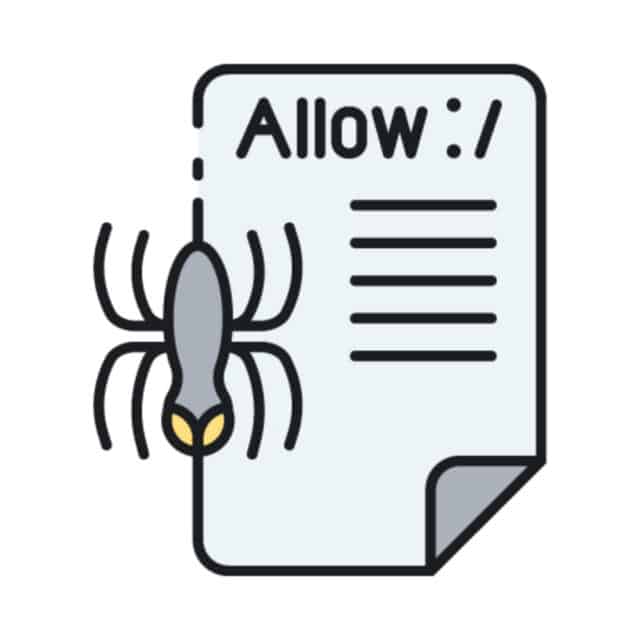
The term “crawl” will appear frequently. This means Google is looking for clues as to what is there on your website. Google uses these elements to determine where you rank by identifying essential keywords and diagnosing on-site problems.
If they could somehow effectively index all of the pages of the website, they’ll be much more inclined to proclaim a good result. The more connections between your site’s pages, the easier it is for spiders to visit them all. It provides the search engine with a greater picture of your site.
Your objective should be to make the site as crawlable as feasible. AI won’t recognize all of the used keywords. If Google has trouble recognizing your site, though, you will have a harder time ranking.
B) Content Duplication
There are numerous myths concerning duplicate content and how much it impacts your search engine rankings. Many people wrongly feel that everything on your site must be unique, yet search engines do not punish duplicate content. If you do it the right way, republishing your material on other websites or republishing your guest contributions on your own site won’t affect your SEO.
A canonical problem occurs when single or multiple URLs on your website have either identical or duplicate content. In actuality, the internet is littered with duplicate content. For website owners, duplicate content on the sidebar is a regular problem. Google may consider duplicated material if you post a blog on your official site with an introduction in the sidebar.
Duplicate content has also been found in two distinct domains. This may be seen in content syndication. When original material is reposted elsewhere, it is referred to as syndication. Google will not punish you if you do this with their approval.
C) Mobile-Friendliness

As we already know, Google first optimizes for mobile phones. This implies we’ll need to create a site that operates well on mobile devices. Because this is the most important factor in deciding how easy it can be for Google to crawl your website. If you go to your Google Search Console, you’ll get a wealth of information as to what Google understands about your site.
D) The time it takes for a page to load

Through the development of Core Web Vitals, Google focuses on page efficiency and usability. If your site or specific features load slowly, Google may punish you or make it even harder for you to outclass your competition.
Yet again, the Google Search Console will supply these statistics, sparing you the hassle of searching for a tool to measure your page speed.
E) HTTPS and SSL
The most crucial ranking variables are security and safety. If Google considers your website to be unethical or suspicious, it will not place you at the top of the search results.
HTTPS and SSL certificates are one means for distinguishing right from wrong. These are simple to set up and can provide you with a tiny lock next to your URL as well as HTTPS before the URL string. This is a crucial trust indicator. Although it doesn’t bring much SEO value, it’s a highly recommended practice that will help you achieve your long-term objectives.
3 Things to Enhance Your Website’s Layout
Whenever it comes to upgrading your website’s architecture, there are three crucial aspects to keep in mind.
1. Make sure you’re familiar with Core Web Vitals
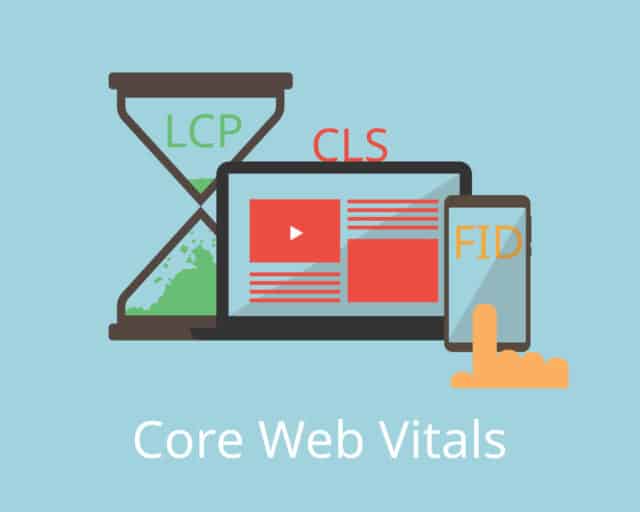
The most important piece of the process is Core Web Vitals. You must understand what they are, how they affect your situations, and what you can do about them.
2. Create a sitemap for your website
Consider using a sitemap plugin like the WordPress sitemap plugin if your website is huge. For example, travel websites, by their very nature, are required to have very large websites. Because all of their travel destinations and tour packages are spread across hundreds of pages, these kinds of websites are enormous.
To make matters worse, as days pass by and the climate changes, the travel web pages are constantly changing as per the seasonal packages and destinations. Creating a sitemap would aid in ranking the travel website for each address. The number of terms they rank for, visitors, and domain authority would all improve significantly as a result of this.
3. Fixing canonicalization issues
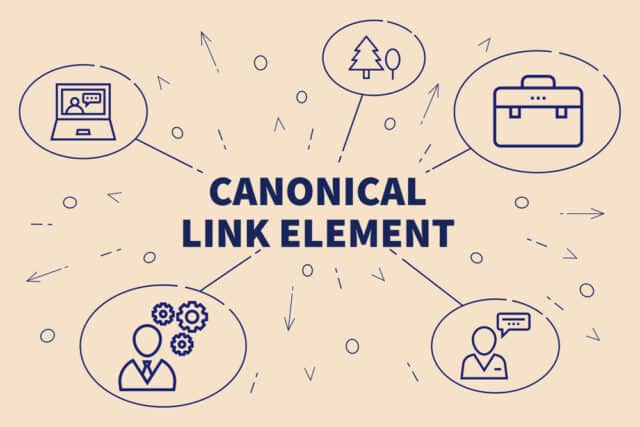
A canonical tag tells search engines that one URL is the master copy of another. The canonical element prevents duplicate or “alike” content from appearing on different URLs, which could cause problems.
There are solutions to fix canonicalization concerns, even if the technology that generates identical data is typically embedded into the website. The core cause of the issue determines the exact answer. It might be as simple as removing a line of code or as complicated as totally rewriting your website to eliminate duplicate content.
However, if Google Search Console or even another tool reports hundreds of duplicate content issues, there is only one primary root reason. If you have different variants of the same page, the canonical tag can help you identify the original content.
4 Tips for Creating High-Quality Content

These are a few of my favorite tips for creating content that both readers and Google will appreciate:
Understand user intent
When a reader arrives on your website, you must recognize what they want to accomplish.
Design a customer profile
You should also know who your audience is, what they like and dislike, and why they’re here.
Breaking up the content
Large blocks of information are no longer effective due to people’s short attention spans. Rather, split up the content with a lot of headings and images.
Make it practical
There is nothing more aggravating than reading something and not knowing what you need to consider to execute a task. Your collected data should be complete. It should, however, deal with the issue, “Now what?” Will the visitor have everything they need after they finish reading your post?
Why is Trust Important for Site Owners?
When it comes to ranking pages in the top 10 search results, PageRank, the renowned method created by Google’s founders, isn’t the only factor they consider.
The importance of trust is growing, and the majority of recent Google adjustments have targeted spammy and obscure websites. Google utilizes TrustRank to verify the legitimacy of your website. Google, for example, is more inclined to trust you if you appear to be a well-known brand. Backlinks from authoritative sites (such as those ending in .gov or .edu domains) are also beneficial.
Your Website’s Trust Elements
Building trust now consists of three components: authority, bounce rate, and domain age.
Authority
Google evaluates your site’s total authority using a mixture of two forms of authority. The domain authority metric determines how well-known your domain is. Apple.com, for example, is quite authoritative since everyone has heard of it. Page authority refers to how credible the material on a specific page (for instance, a lengthy article) is.
Bounce Rate

The bounce rate is simply a calculation of how frequently customers visit your site per page before leaving. Improve your information, loading time, usefulness, and attract the right readers to lower your bounce rate. The arithmetic is simple: visitors who are interested in your material will spend more time on a site that loads quickly, looks good, and has excellent content.
Another effective approach to do so is through video, but your video content must stand out and deliver. Most essentially, your material must meet the reader’s expectations. They need to get to your website as quickly as possible and find exactly what they need. In order to do this, most users will remain on your website long enough for Google to identify it as conceptually relevant.
The age of the domain
Isn’t it reasonable that the individual who is the eldest in the group is frequently the most respected? The internet is no different. A webpage that has been around for a long time and produces consistent content that is appealing to search engines will always rank higher than a new website.

3 Ways to Increase Your Trustworthiness
Here are some of my top recommendations for increasing trust on your website:
1. Patience is required
Trust does not develop immediately. All you have to do now is wait and realize that Google isn’t in a hurry to crawl your site. Making minor modifications to the site and requesting indexing using Google Search Console is one technique to persuade them to do it sooner. This will force Google to take action, but nothing is certain.
2. Understand user intent
Realizing what customers want, rather than what you just need them to desire, is an important component of SEO marketing. Whenever anyone uses Google to look for anything, they are aiming to do something. If you provide that service, make sure you offer the entire package. Otherwise, they’ll arrive at your website, discover it’s subpar, and leave.
3. Provide them with what they desire

Giving consumers what they want as soon as they come on your site is a terrific way to keep them from leaving. A large section of the population does not read the full article. Rather, they’re looking for a solution, and the sooner you can provide it, the better.
The best SEO tools
SEO, being a fairly technical profession, uses a number of software and tools to assist in the optimization of websites. Some of the most commonly used freemium tools are as follows:
Google Search Console (GSC)
This was previously termed Google Webmaster Tools. This is a free Google tool that every SEO should have. By offering rankings and traffic data for prominent keywords and webpages, GSC can assist in finding and fixing on-site technical difficulties.
Google Ads – Keyword Planner

As part of its operation, Google Ads offers a freemium product named Keyword Planner. Despite being designed for sponsored search, it may be a beneficial SEO tool because it provides ‘term ideas’ and ‘search volume’ that can be significant to conduct keyword analysis.
Analysis tool for backlinks
There are various link analysis tools on the market. The most prominent of which are Majestic and AHREFs. Customers can use backlink analysis tools to find out which domains link towards their own or rivals’ websites. They may also be used to find new connections throughout the link-building process.
SEO platforms
Most of the tools used by SEO to optimize websites are available on a wide range of SEO platforms. Some of the most prominent are Moz, Searchmetrics, BrightEdge, and Linkdex.
These tools monitor keyword rankings, look for on-page as well as off-page SEO opportunities, help with keyword research, and a range of other SEO tasks.
Social media
The majority of social networking sites have no significant impact on SEO. They could, nevertheless, be a great tool for networking with several other webmasters and for creating contacts that could lead to backlinks and guest blogging opportunities.
Search traffic optimization: from clicks to conversions
When implemented efficiently, search engine optimization can significantly increase website traffic. However, until that traffic transforms into paying consumers, the business will not grow. Conversion rate optimization can help with this.
Conversion rate optimization entails changing things in websites and monitoring their impact on conversion rates with techniques like A/B testing. Skilled search marketers recognize that merely delivering traffic to websites is not enough.
What will happen to traffic once it reaches levels substantially greater than they are now? Previously, conducting tests to improve conversions on your website was a hard and technical procedure. However, with services like Optimizely, it’s as easy as inserting a single sentence of Javascript.
Sponsored vs. Organic Results
In search results pages, organic and sponsored results are separated into two groups.
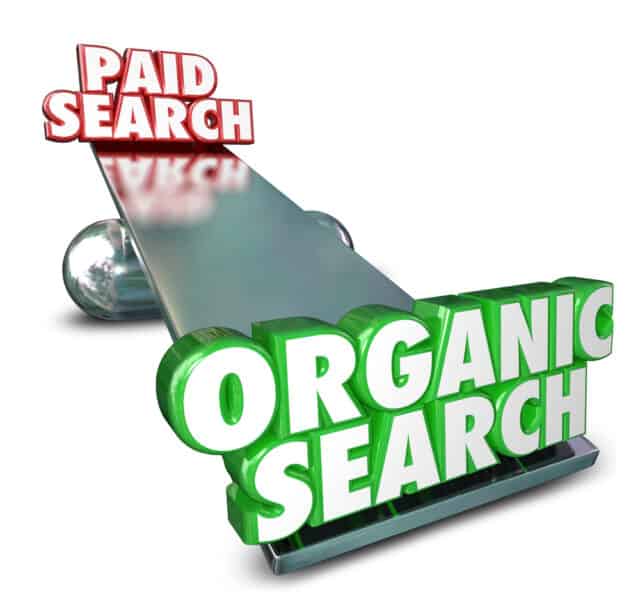
Results from a Natural Search
Organic search results are natural results that are ranked solely on their merit. To put it differently, there is no way to bribe Google or even other search engines in order to improve your organic search rating.
Hundreds of distinct ranking variables are used by search engines to rank organic search results. Organic results, on the other hand, are considered by Google as the most relevant, reliable, and reputable sites or web pages on the subject.
When we talk about SEO, we’re referring to the process of getting your website to appear higher in organic search results.
Paid Search Results
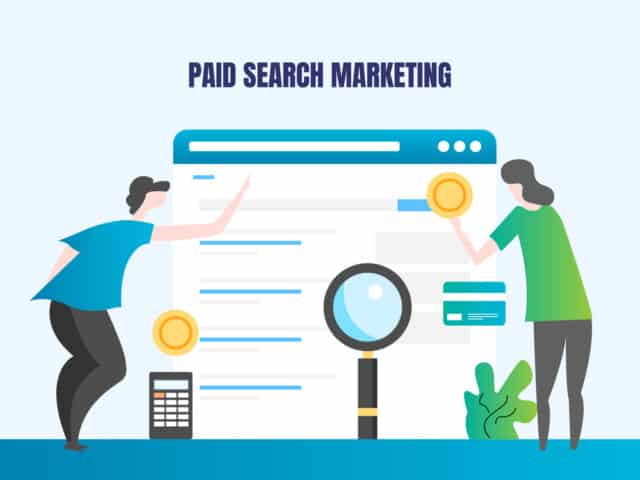
Ads that are displayed below or above organic search results are referred to as paid search results. Paid advertisements are totally separate from organic listings. Sponsors in the paid results section are “graded” based on how much they are willing to spend on a single visitor from a specific set of search queries. We call this Pay Per Click (PPC) advertising.
Techniques used in White Hats vs Black Hats SEO
There are two types of Seo strategies: those that search engines suggest as part of the effective design (“white hat”) and then those that search engines don’t like (“black hat”). Search engines utilize spamdexing as one approach to decrease the influence of the latter.
Industry experts have classified these tactics, as well as the professionals who apply them, either as white hats or black hats SEO. White hats have long-lasting benefits.
However, black hats anticipate that their sites will be blacklisted. Once the search engines discover what they’re up to, it can be done either partially or completely.
White Hat SEO
White hat SEO is an SEO technique that adheres to search engine guidelines and does not use deception. This is crucial to understand since search engine recommendations are not intended as a set of rules or commandments.
White Hat SEO entails much more than simply adhering to the guidelines. It is about assuring that the content that a search engine analyzes and indexes are the same content that a viewer sees.
White hat advice basically comes down to generating content for people, not search engines, rather than seeking to fool the algorithm from its initial purpose. Then make that information freely available to internet “spider” algorithms.
Even though the two are not similar, white hat SEO is associated with coding that promotes accessibility in numerous ways.
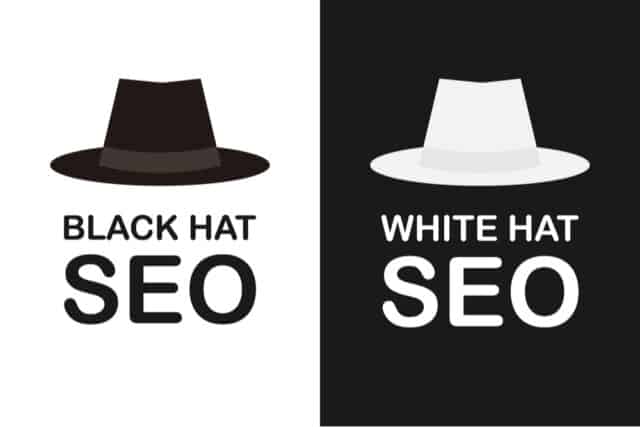
Black Hat SEO
Black hat SEO attempts to boost rankings by methods that search engines dislike or that involve deception. One black hat technique is to use secret messages, either as text colored to match the background, in a hidden div (In an HTML document, the div> element denotes a division or section) or placed off-screen.
Cloaking is just another solution that shows alternative information or URL depending on whether the page is requested by a person or a search engine. Below are some black hat strategies.
A) Content duplication
When seeking to rank for a given keyword, a website’s content may be duplicated in order to repeat the term in the text. Websites that use it are penalized by Google.
B) Invisible text and keyword stuffing
A long time ago, a black hat trick was to place a number of keywords at the end of your articles and make them of similar color as the background. This strategy can get you banned. Keywords crammed into locations where they don’t belong are equivalent to this.
C) Cloaking and redirecting
There’s a correct method and the wrong way to perform redirects. Purchasing a multitude of keyword-rich websites and funneling all traffic to a specific website is a bad idea.
D) Flawed linking techniques
Purchasing a marketing package that guarantees 4,000 links in 2 days is not the greatest way to build links. In your area, you’ll need links to related content and good traffic-creating websites. We will be mentioning White Hat SEO only because Google penalizes sites that practice black hat techniques.
Gray Hat SEO
Gray hat SEO is another term that is occasionally used. This is a hybrid of black hat and white hat techniques, in which the strategies used prevent the site from getting punished but do not result in the best material for users. Gray hat SEO focuses solely on increasing search engine ranks.

Search engines can punish sites found to be using black or gray hat practices by decreasing their rankings or even deleting their entries from their data sets. Such penalties may be enforced mechanically by search engine algorithms or individually by a site evaluation.
One instance is the banning of both BMW Germany and Ricoh Germany from Google due to misguiding behavior in 2006. However, both companies apologized profusely, fixed the problematic pages, and were restored on Google’s search results page.
Updates to Google Algorithms and SEO
Because of the phrase “algorithm,” SEO might seem inaccessible or unachievable. An algorithm is a set of instructions that a search engine employs to compute and rank websites based on the search query entered.
You may very well have remembered hearing that algorithms are always evolving, and this is true to some extent. Google releases “core upgrades” many times a year to better serve individuals who conduct internet searches.
Google has the right to make modifications at any moment. However, the development of high-quality content, the usage of targeted keywords, and the establishment of reliable backlinks should be your top priorities.
When it comes to Google’s algorithms, you should not try to “hack the system.” One of the objectives for the frequent changes is to screen out people who engage in such behavior. It may affect your rankings if you focus mostly on search engine algorithms and not on the website content.
Subscribe to our Newsletter
Sign up to receive email updates on new product announcements, exclusive sales and marketing content, special offers on email validation plans, and more.
We send curated content as per your preference and do not indulge in spam!
What would you like to know about
We’re committed to your privacy. TuxMailer uses the information you provide to us to contact you about our relevant content, products, and services. You may unsubscribe from these communications at any time. For more information, check out our privacy policy.



